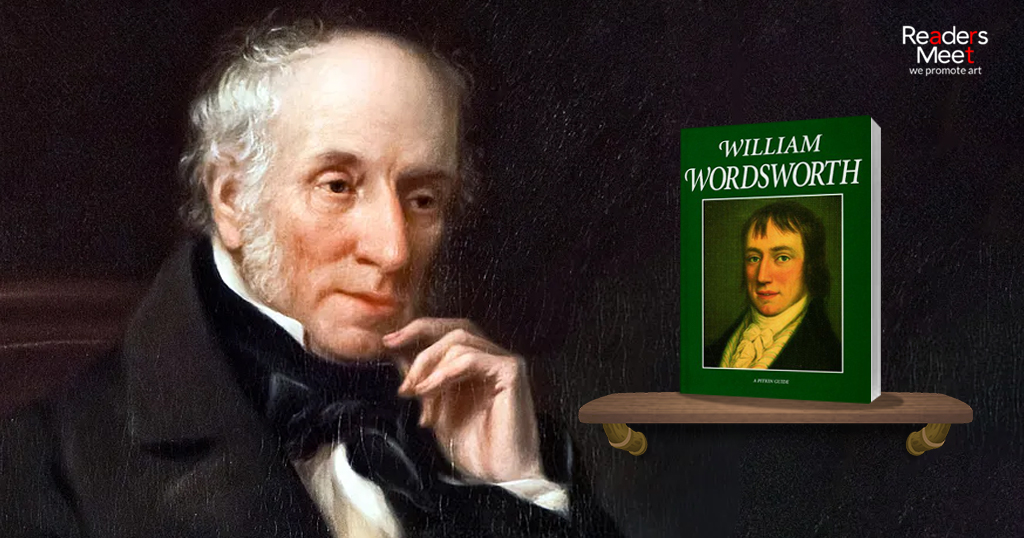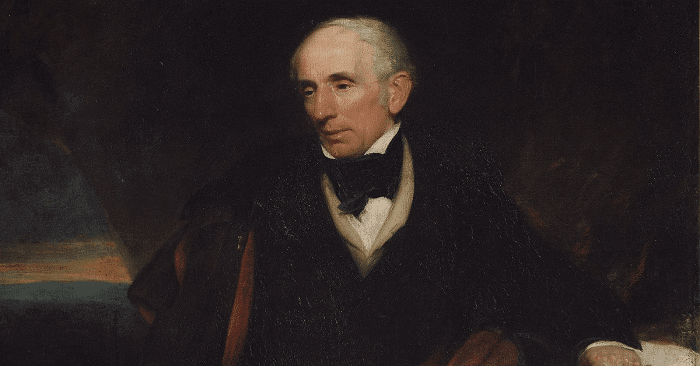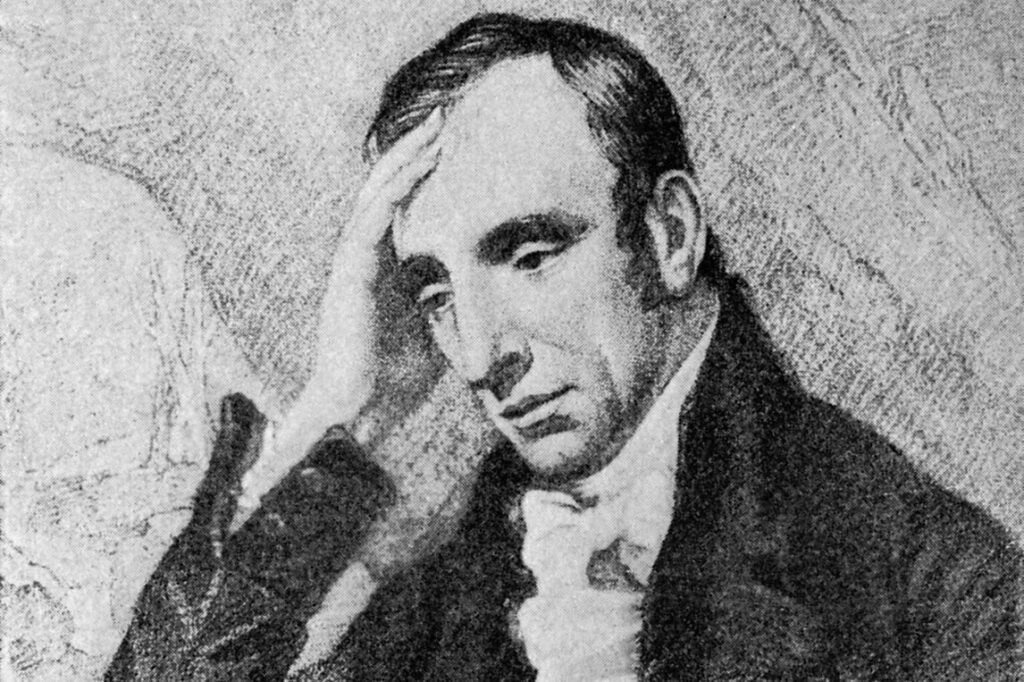Table of Contents
ToggleTop 50 Interesting and Lesser-Known Facts About William Wordsworth
One of the best-known authors of English literature during the Romantic era was William Wordsworth (1770–1850). Wordsworth, who was born in Cockermouth, England, is most known for his poetry, which honored the natural world, the human spirit, and the significance of life’s unique experiences. His art was a reflection of his abiding passion for nature and his conviction that it may uplift and heal the human spirit.
Lyrical Ballads (1798), co-authored by Wordsworth and Samuel Taylor Coleridge, is his most well-known collection of poetry and the precursor to the Romantic movement. The poems in this collection eschewed the formal frameworks of earlier poetry traditions in favor of everyday concerns and common language. His idea that nature serves as a moral and spiritual compass is best illustrated by his poem Tintern Abbey.

Wordsworth assumed the position of poet Laureate of England in 1843 and remained in it until his passing. In addition to his literary accomplishments, he is renowned for having had a long-lasting impact on poets’ perceptions of the interdependence of nature and humanity. Amidst the grandeur of nature, his masterwork, The Prelude, provides an in-depth examination of his life and personal development.
Here are 50 lesser-known facts about William Wordsworth:
Early Life and Family
Birthplace Connection to Nature
Wordsworth was born on April 7, 1770, in Cockermouth, a small town nestled in the heart of the Lake District, a region that would profoundly influence his poetry. This natural setting fostered his early love for the countryside, a recurring theme in his work.Loss of Both Parents at a Young Age
Wordsworth experienced personal tragedy early in life, losing his mother when he was just eight years old and his father five years later. This loss had a lasting impact on him and his sense of loneliness and responsibility for his siblings.Close Bond with His Sister Dorothy
Wordsworth had a very close relationship with his sister, Dorothy Wordsworth, who was also a poet and diarist. Dorothy’s observations of nature and life were a source of inspiration for William, and the two shared an intense bond throughout their lives.Orphaned Siblings
After the death of his parents, Wordsworth and his four siblings were left in the care of relatives. This family separation deeply affected him, particularly his bond with Dorothy, who became a lifelong companion and collaborator.Schooling in the Countryside
Wordsworth attended the Hawkshead Grammar School, situated in the rural Lake District. His time there, surrounded by nature, reinforced his love for the natural world and later inspired much of his poetry.
Academic and Travel Experiences
Cambridge Education
Wordsworth attended St John’s College, Cambridge, in 1787. While he was not particularly invested in his studies, this experience broadened his perspective on politics, philosophy, and society, elements that would later influence his work.Influence of French Revolution
During his time at Cambridge, Wordsworth traveled to France in 1791 and became deeply influenced by the revolutionary ideals. His early enthusiasm for liberty and egalitarianism significantly shaped his political views, though he would later grow more conservative.Fell in Love with a Frenchwoman
During his stay in France, Wordsworth met Annette Vallon, with whom he had a daughter named Caroline. However, due to political tensions between England and France, Wordsworth returned to England and was unable to reunite with Annette and their child for many years.Struggles with Patriotism
Wordsworth’s involvement in the French Revolution left him torn between his radical ideals and his English patriotism. This internal conflict led to a complex relationship with both his political views and his national identity.Gained Financial Independence through Legacy
In 1802, Wordsworth received a legacy from a friend of his father, which provided him with financial independence. This inheritance allowed him to focus on his poetry without the burden of financial insecurity.
Literary Career
Co-Founder of the Romantic Movement
Alongside his friend and fellow poet Samuel Taylor Coleridge, Wordsworth is considered one of the founders of the Romantic Movement in English literature. Their collaboration on “Lyrical Ballads” in 1798 is often credited as the beginning of this literary revolution.Belief in Common Language for Poetry
Wordsworth famously believed that poetry should use the language of common people rather than elevated or classical diction. This principle is outlined in the preface to “Lyrical Ballads”, where he argues for poetry that reflects real, everyday speech.Criticism for Plain Style
Wordsworth’s emphasis on simplicity in language and subject matter was initially met with criticism. Many of his contemporaries found his poems too plain and lacking in the traditional grandeur of classical poetry.The Prelude: His Magnum Opus
“The Prelude”, Wordsworth’s most significant work, is an autobiographical poem that recounts the development of his poetic mind. Although he worked on it for over 40 years, it was published posthumously in 1850, just months after his death.Pioneering Ecocriticism
Wordsworth’s deep connection with nature and his frequent portrayal of the natural world as a living entity make him one of the first poets to explore what we now refer to as ecocriticism. His writings often emphasize the interdependence of humans and the environment.

Relationships and Influence
Close Friendship with Coleridge
Wordsworth and Samuel Taylor Coleridge had a profound friendship and creative partnership. However, this relationship was later strained due to Coleridge’s growing dependence on opium and Wordsworth’s shift toward more conservative politics.Influence on the Young John Keats
The young poet John Keats was deeply inspired by Wordsworth’s nature-centered poetry. Keats admired Wordsworth’s ability to draw profound emotions from simple, natural experiences.Rivalry with Lord Byron
Though Wordsworth is celebrated today as one of the great Romantic poets, his contemporary, Lord Byron, publicly criticized his work. Byron referred to Wordsworth as “Turdsworth” in his letters, a mockery of Wordsworth’s more moralistic style.Admired by Tennyson
Alfred Lord Tennyson, another great English poet, expressed admiration for Wordsworth’s work, considering him a major influence. Tennyson’s early poetry reflects the contemplative and naturalistic qualities found in Wordsworth’s verses.Mentor to the Brontë Sisters
The Brontë sisters—Charlotte, Emily, and Anne—were influenced by Wordsworth’s portrayal of nature and human emotion. His works, especially “Tintern Abbey,” resonated with their writings and shaped the way they depicted landscape and mood in their novels.
Personal Life and Habits
Deep Love for Walking
Wordsworth was an avid walker and would often take long, solitary walks through the Lake District. It was during these walks that he found much of his inspiration for his poetry, often composing entire verses in his head while outdoors.Lived with Dorothy
Wordsworth and his sister Dorothy lived together for most of their lives. Dorothy not only supported him emotionally but also contributed ideas and insights that made their way into his poetry. Some of her journal entries provided key details for some of his poems.Married Childhood Friend
In 1802, Wordsworth married Mary Hutchinson, a childhood friend from his days at Hawkshead Grammar School. Their marriage was a happy one, and they had five children together.Loss of Two Children
Wordsworth suffered great personal tragedy when two of his children, Catherine and Thomas, died in childhood. This profound loss deeply affected his later poetry, which became more introspective and somber in tone.Maintained a Simple Lifestyle
Despite his growing fame and financial independence, Wordsworth lived a simple, frugal life. He preferred the quiet of the Lake District to the bustling city life of London, rarely visiting the capital unless necessary.
Achievements and Recognition
First Published at Age 23
Wordsworth’s first published poem appeared in 1793, in a collection titled “An Evening Walk and Descriptive Sketches.” Although this work did not immediately establish him as a major poet, it paved the way for his later successes.Poet Laureate
In 1843, Wordsworth was appointed Poet Laureate of the United Kingdom, an honor he held until his death in 1850. Although initially reluctant to accept the title, he was persuaded to take the position by Sir Robert Peel.Refused to Write Official Poetry as Poet Laureate
Unlike many of his predecessors, Wordsworth wrote no official poetry in his capacity as Poet Laureate. He believed that his poetic gift had diminished with age and was no longer capable of writing works of the same caliber.Received an Honorary Degree from Oxford
In 1839, Wordsworth was awarded an honorary Doctor of Civil Law degree from Oxford University in recognition of his contributions to English literature.Global Influence
Wordsworth’s influence extends far beyond England. His works have been translated into numerous languages, and his ideas about nature and emotion have had a lasting impact on poets and writers around the world, including in countries like Germany, Japan, and the United States.
Later Life and Death
Fell Out of Favor with Radicals
Wordsworth’s political views shifted dramatically as he aged. Once a fervent supporter of the French Revolution, he later became more conservative, a change that alienated some of his earlier supporters who remained more radical in their beliefs.Enduring Depression
In his later years, Wordsworth suffered from periods of depression, particularly after the deaths of his children. This melancholy is reflected in some of his darker, more introspective poems from this period.Never Returned to France
Despite his deep connection to France, Wordsworth never returned after the political upheavals of the 1790s. His relationship with Annette Vallon and their daughter Caroline remained distant, though they corresponded occasionally.Devoted to Anglicanism
In his later life, Wordsworth became increasingly devout, finding solace in his Anglican faith. His religious convictions are reflected in his later poetry, which often contains themes of spirituality and divine providence.Influence on Environmentalism
Wordsworth’s poetic celebration of nature has inspired environmentalists and conservationists in the centuries following his death. His works are often cited as an early call for the preservation of the natural world.

Interesting Quirks and Habits
Inspired by the Night Sky
Wordsworth was particularly fascinated by the night sky, and several of his poems reflect his awe of the stars and the cosmos. He saw the night as a time for reflection and contemplation, often weaving celestial imagery into his verse.Collector of Rare Books
Wordsworth was an avid book collector, particularly of rare editions. He amassed an impressive library of literary works, many of which he would read during his quiet evenings at home.Was a “Recluse” by Choice
Although he enjoyed the company of fellow poets and intellectuals, Wordsworth was known for his reclusive nature. He preferred the solitude of his home, Dove Cottage, and the surrounding Lake District to social gatherings.Love for Gardening
Wordsworth was passionate about gardening and took great pride in cultivating flowers and plants around his home. He viewed gardening as a way to commune with nature, much like his long walks.Had a Strong Connection to Trees
Wordsworth had a particular fondness for trees, especially oaks. He believed trees held a spiritual significance and often wrote about them as symbols of endurance, strength, and wisdom.
Legacy and Impact
Inspiration for Modern Ecopoetry
Wordsworth’s environmental awareness and depiction of nature as a living, breathing entity have inspired the modern movement of ecopoetry. Contemporary poets draw on his work to explore environmental themes and the human relationship with nature.Cottages Turned Into Museums
Wordsworth’s homes in the Lake District, including Dove Cottage and Rydal Mount, have been preserved as museums dedicated to his life and work. Visitors from around the world come to see where the great poet lived and wrote many of his most famous works.Influence on Transcendentalism
Wordsworth’s poetry influenced the American Transcendentalist movement, particularly the works of Ralph Waldo Emerson and Henry David Thoreau. His ideas about the spiritual and emotional power of nature resonated deeply with this group of thinkers.Commemorated by the UK Postal Service
In 1970, to celebrate the 200th anniversary of his birth, the UK Postal Service issued a special commemorative stamp in Wordsworth’s honor.Wordsworth and Hollywood
Though not widely known, Wordsworth has occasionally been referenced in popular culture. His poem “Daffodils” has been quoted in several films, including “Eternal Sunshine of the Spotless Mind” and “The History Boys.”
Posthumous Recognition
Honored with a Statue in Grasmere
Wordsworth is honored with a statue in the village of Grasmere in the Lake District, where he lived for many years. The statue stands as a tribute to his contributions to English literature and his deep connection to the region.Wordsworth’s Gravestone Is a Popular Tourist Destination
Wordsworth’s grave, located in St. Oswald’s Churchyard in Grasmere, is a popular destination for literature lovers. Visitors often leave flowers or copies of his poetry at the site in tribute to the great poet.Early Criticism Reversed Over Time
While Wordsworth faced criticism during his lifetime, particularly for his plain style and focus on the ordinary, his reputation grew steadily after his death. Today, he is regarded as one of the greatest poets in the English language.Legacy of Romanticism
Wordsworth’s work played a crucial role in shaping the Romantic Movement, which emphasized individual emotion, nature, and the rejection of industrialization. His legacy lives on in contemporary poetry, music, and art that continue to explore similar themes.His Poetry’s Role in Education
Wordsworth’s poetry is a staple of English literature curricula around the world. His works are studied not just for their historical significance, but also for their profound exploration of human emotions, nature, and the power of memory.
Conclusion: Readers are still impacted by William Wordsworth’s life and works more than 170 years after his passing. He will always hold a special position in the annals of literary history because of his dedication to examining the depths of human feeling, the beauty of the natural world, and the basic joys of life.
These 50 little-known facts about the renowned poet shed insight on the complexities of his personality, his hardships, and his accomplishments. They also provide a more nuanced picture of the man who, by his poetry, promoted harmony between nature and humanity.

